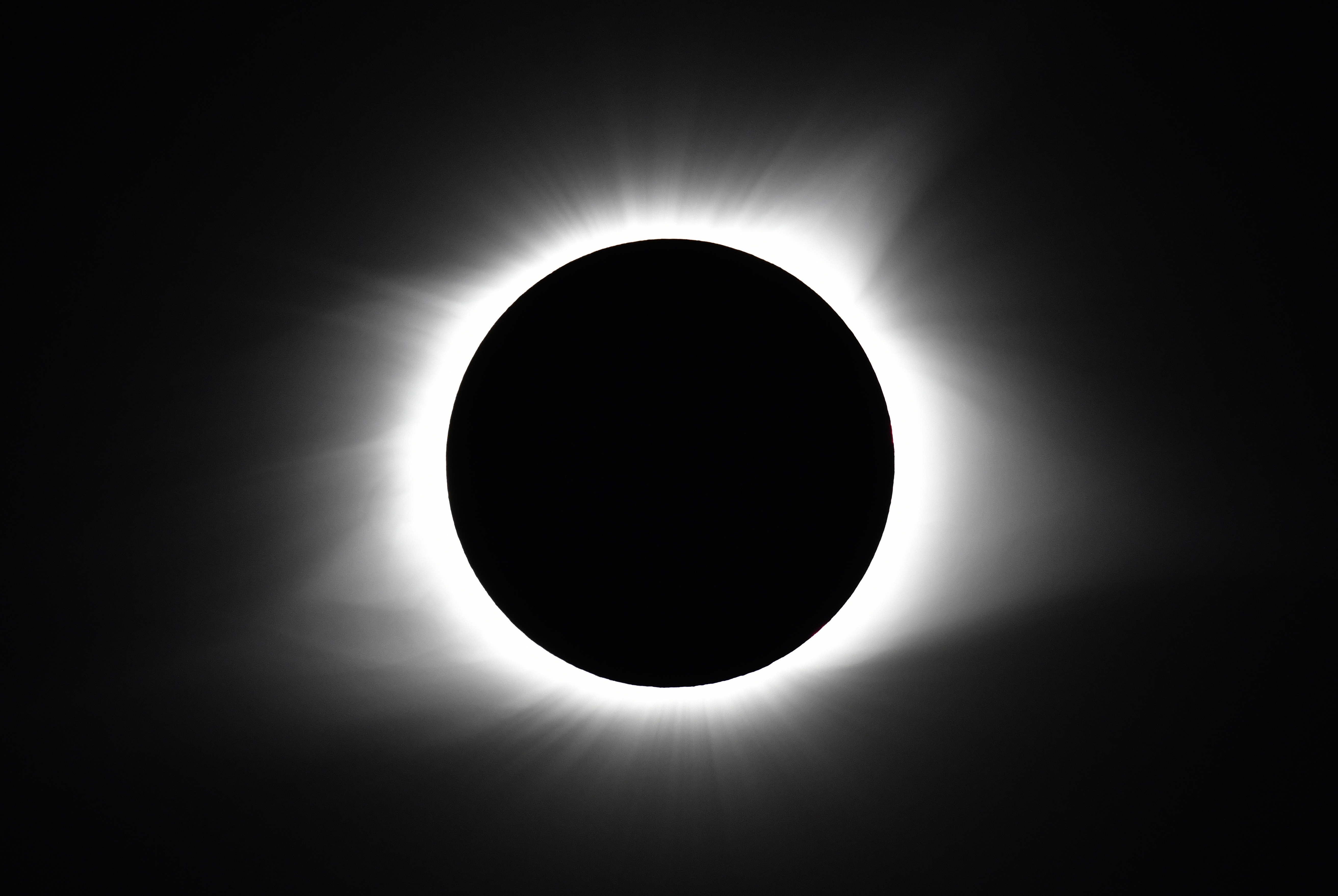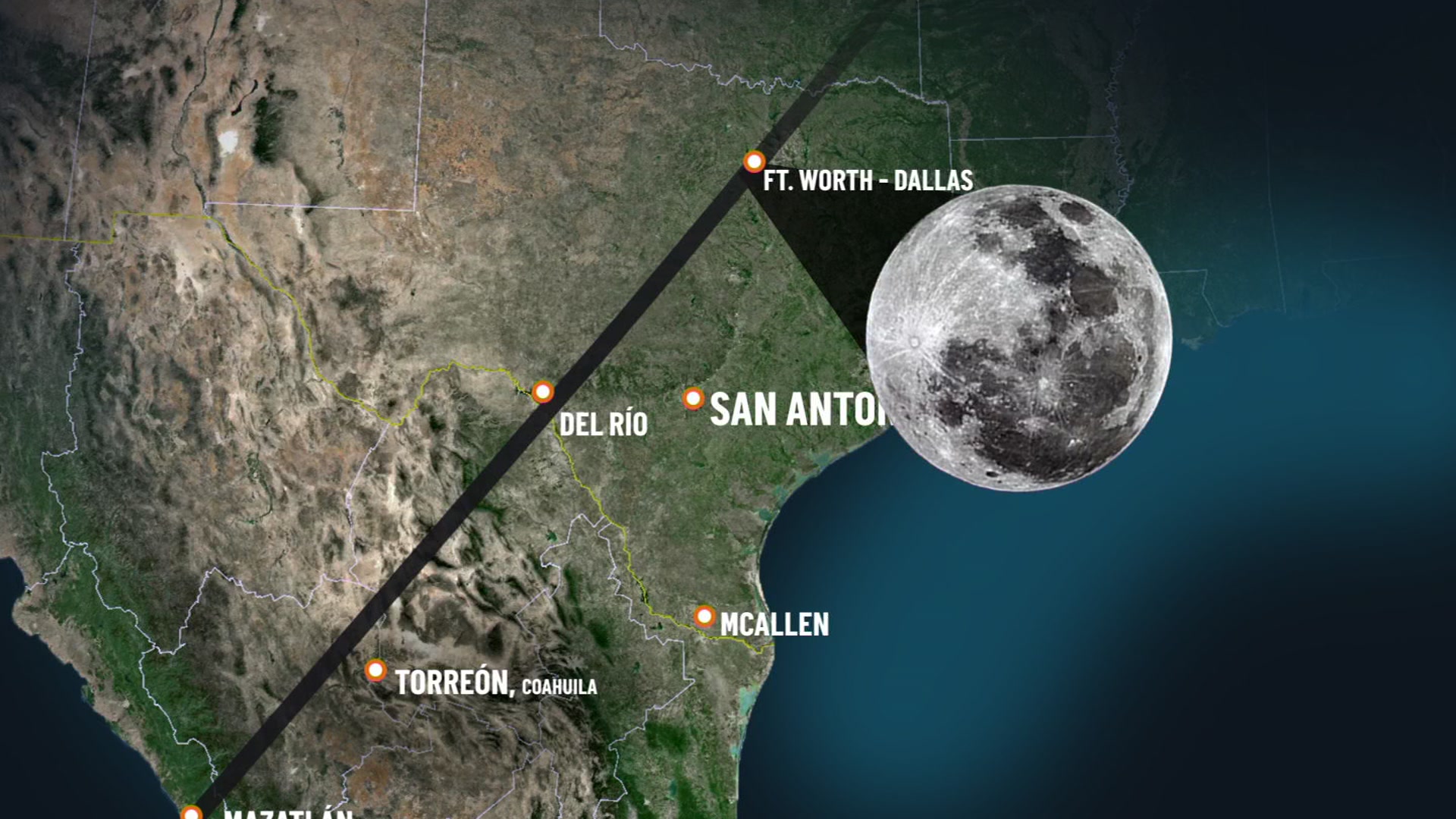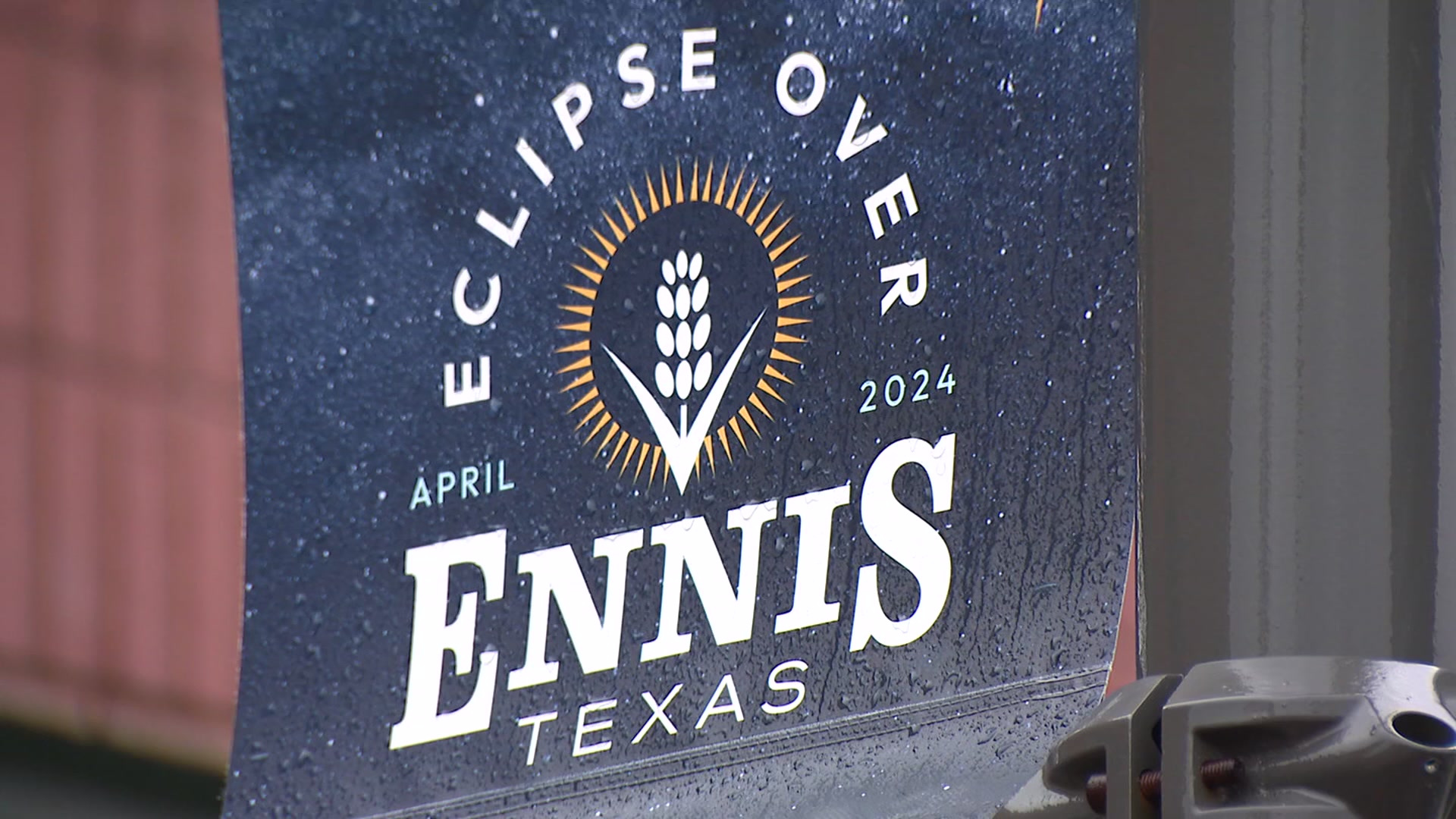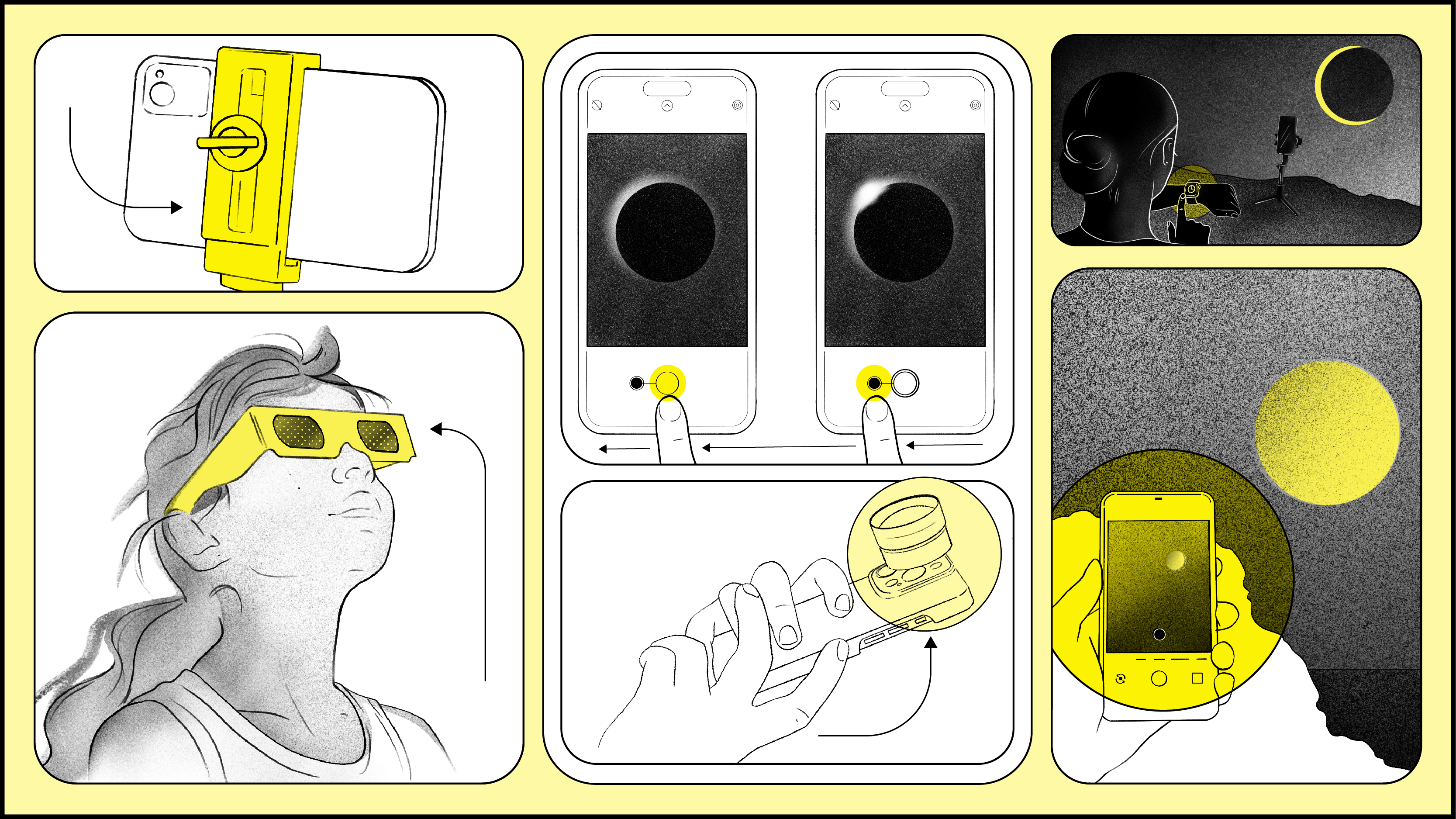Officials in Kaufman County issued a disaster declaration Wednesday ahead of next month's total solar eclipse, saying they expect the county's population to double and for traffic to be a major issue.
"Our current population is somewhere around 200,000. We're expecting another 200,000," Steve Howie said. Howie is the Kaufman County Emergency Management Coordinator. "We can't handle 400,000 vehicles and people in this county in one quick spurt like that. So, it's a huge concern."
A solar eclipse will occur over North Texas for several hours on April 8, 2024. The partial eclipse will begin at 12:23 p.m. and end at 3:02 p.m. Totality will last only minutes, from about 1:40 p.m. until 1:44 p.m., depending on location. The event is truly a rare occasion. Another total solar eclipse won't occur over the United States until 2044 and the National Weather Service says there won't be another in our region until 2317.
Kaufman County Judge Jakie Allen issued the disaster declaration for April 5-9 in an effort to request resources from the state.
Get top local stories in DFW delivered to you every morning. Sign up for NBC DFW's News Headlines newsletter.
"We have got DPS bringing in all their people for the county," Howie said. "Sheriff Bryan Beavers has said that he is going be at full staff, riding two (deputies) to a car if he has to… EMS is adding additional ambulances, our provider CareFlight…. They are all going to spread out to different areas so that if they get calls, it'll minimize their travel time."
County officials noted the cities of Kaufman and Terrell are on the centerline of the eclipse and are expected to draw the most viewers who want to experience totality. The county said the chambers of commerce fielded requests from several states and countries around the world.
"It's been a concern even back as far as 2017 when they had a total solar eclipse. We talked to emergency managers along that route. It was the same thing. Traffic was the biggest single concern," Howie said.
"This dramatic increase in population, even for a short time, will greatly impact our Public Safety agencies, taxing their ability to respond to calls. Law enforcement, Fire, EMS, Emergency Management, and many other agencies have been meeting for several months to prepare for this event," the county said in a statement.
According to Howie, the county is concerned about traffic after the eclipse ends.
"It could very easily be that we have 50,000 people show up, and it won't be a big deal. But if we have 200,000 like we are expecting, it will be a big deal," Howie said. "The other emergency managers that I got information from, that day they will start trickling into their viewing spots. Once the eclipse occurs and is over, they don't trickle out. They all go at once. That's why you have the gridlock or major traffic concerns."
In addition to traffic concerns and a strain on emergency services, the county is also thinking about gas supply.
“We have been talking with fuel stations. The biggest which is Buc-ee’s. They will fill tanks to capacity on the 5th,” Howie said. “Our other (gas stations) will also be working the same premise, too. (To) top off as best they can beforehand and hope we won’t run out.”
In an email to NBC 5, a spokesperson for Buc-ee's said, "Buc-ee’s will be open for business during the eclipse so afterwards guests can enjoy our award-winning clean restrooms and freshly prepared food."
County officials said they have tried to think of every scenario including the overuse of porta-potties at eclipse viewing events.
According to Howie, inspectors will make sure, “they don’t overload their septic systems. Because if you overload the septic system, it just pops off the top and rolls over, now you’ve got a biological emergency.”
The county said Allen also reached out to Gov. Greg Abbott (R) requesting a state disaster declaration which would make more state assets available if needed.
"That would open the door to a lot more resources available to us, especially from outside the viewing area," Howie said.
While several other Texas counties in totality have also issued disaster declarations, so far there has been no statement from the governor's office on a wider declaration.
MAP OF SOLAR ECLIPSE PATH
LOOKING AT THE ECLIPSE? USE PROPER EYE PROTECTION!
Anyone looking at the solar eclipse on April 8 should view the partial eclipse ONLY with proper eye protection.
Looking at the sun during a partial eclipse can lead to solar retinopathy, a condition that occurs when someone looks directly at the sun and damages the back of the eye or the retina. The damage from solar retinopathy can be permanent and lead to an overall reduction in the sharpness of a person's vision.
Sunglasses don’t offer enough protection. Solar glasses meeting the ISO 12312-2 international standard are thousands of times darker than sunglasses.
Astronomer Rick Fienberg told NBC 5 Responds that simply looking for a product with the ISO designation printed on the product isn’t enough because anyone can print that number on a pair of glasses. Fienberg is a volunteer with the American Astronomical Society’s Solar Eclipse Task Force and maintains this list of suppliers and distributors of solar viewing glasses and equipment.
Plan ahead, but if you can’t find enough eclipse viewers for each person in your family then make plans to share.
If you have eclipse glasses from a previous eclipse, look them over to make sure the filters are not torn, scratched, or punctured. If filters are coming loose from their cardboard or plastic frames, don’t use them.
If you don’t have glasses or equipment, there are indirect ways to view the eclipse. Check out this page for instructions.
Once in totality, it’s safe to look at the moon and corona without special glasses but ONLY while the moon completely covers the sun.







